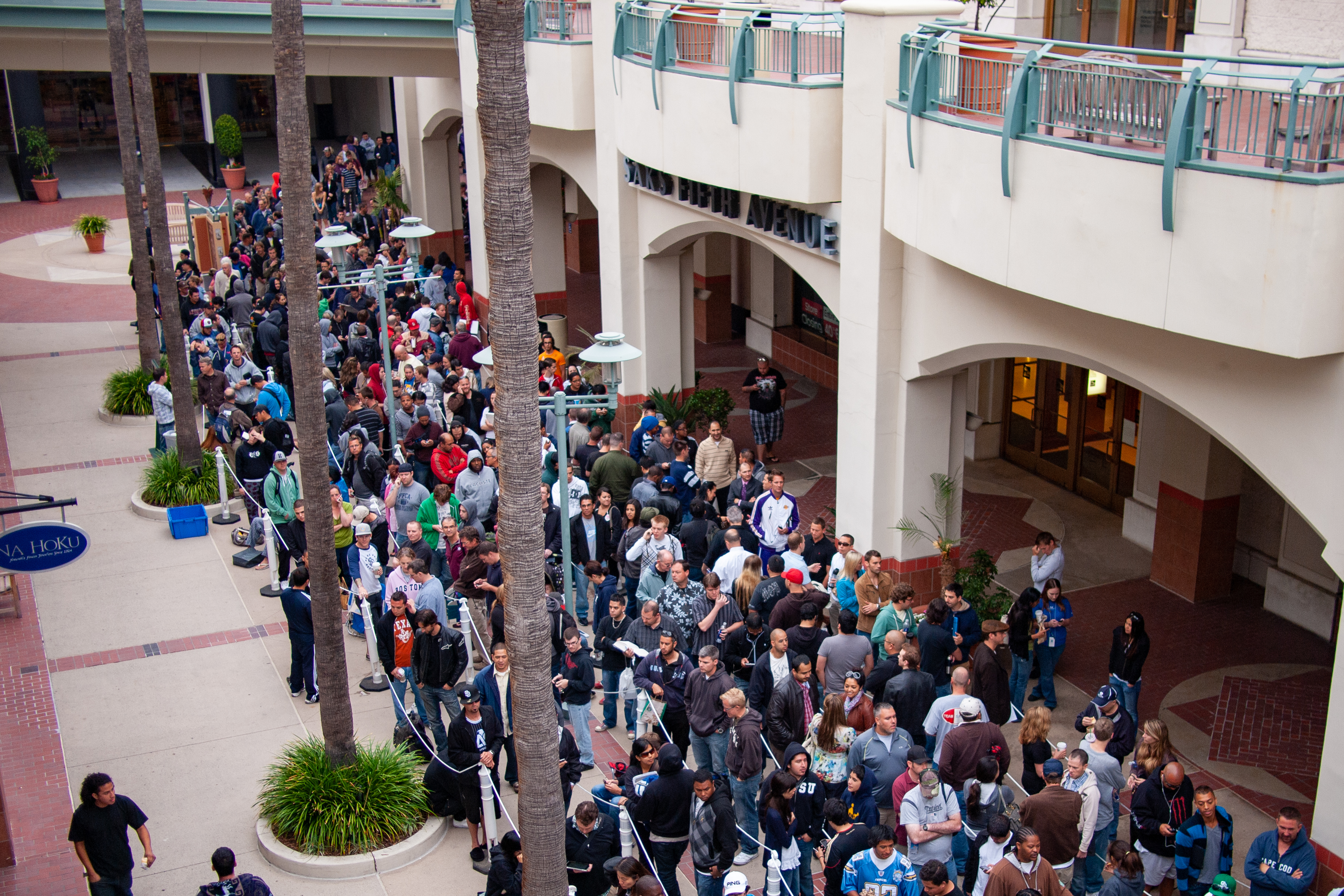I should write a long missive about Apple Store’s 20th anniversary. But my essay from five years ago today serves up the core information. Please read that one for my reflection on the grand opening and what then CEO Steve Jobs meant the retail operation to be and what it actually became.
More significant than being a singular event, Apple Store’s opening represented one of four risks taken in 2001 by the fruit-logo company during a devastating recession. While competitors massively pulled back, such as Gateway shuttering stores, Apple made investments that culminated in release of the first iPhone six years later. Besides retail: iTunes (January); Mac OS X (March); iPod (October). From them evolved the logistics and manufacturing infrastructure, research and development, sales, services, and software that culminated in the smartphone that transformed Apple from a struggling PC company into a tech titan.
Where will Apple Store go next? My guess: Further from traditional retail, becoming a brand-reminding destination for customer service, fulfillment, and one-on-one repair, sales, and technical support. While already moving in that direction, SARS-CoV-2 (severe acute respiratory syndrome Coronavirus 2)/COVID-19 lockdowns accelerated the pace. Here in California, Apple closed its shops several times during the pandemic and otherwise scaled back typical retail operations. While customers couldn’t go into the stores, they could still shop online—and with surprising speed and support.
Example: For my wife’s birthday, I purchased a 13-inch MacBook Pro M1. Had I chosen one of the two standard configurations, Apple would have delivered the laptop to my apartment on the same day of purchase. For free. Whoa. Pickup was another option at Apple Store Fashion Valley. Because I custom-configured for 1TB storage, we had to wait longer—but shorter time than order-processing indicated. Placed: May 11, 2021. Estimated arrival: May 24. Delivered: Yesterday. That’s smooth sales logistics.
Another example: My wife and I made a quick trip to Fashion Valley Mall on May 16. I wanted to duck into Apple Store to size up iPhone 12 Pro. Both of our XSes are two years old next month, and we’re considering an upgrade—although waiting a few months longer for new models is more likely action. To my surprise, walk-in shopping isn’t permitted. A retail specialist motioned to a short line (five people) where I would need to make an appointment. To browse? No thanks. But from a pandemic perspective, with San Diego County still limiting the number of customers allowed in stores, appointments make sense—even if I’m grumbly about them.
My speculation: Apple Store won’t return to pre-pandemic operations anytime soon, if ever. CEO Tim Cook and his executive team would be wise to lean on excellent retail logistics to take and fulfill customer sales. Keeping, and even extending, in-store sales and/or support appointments can reduce the crowded chaos common among the shops before the pandemic. More importantly, one-on-one time can create a stickier customer, who feels valued by the personalized interaction that’s about him or her and whose repeated return for similar experience leads to additional sales and lasting loyalty to the brand.
Apple Store started as a showcase for the Macintosh as a “hub” for digital activities such as creating photos and videos, listening to music, and watching movies. If Cook and Company continue the course charted during the pandemic, Apple Store will become a hub for the fruit-logo lifestyle—ease and convenience, which very much is about personalized sales and support.
For example, Johnny orders a new Mac, and the store—acting as a fulfillment center—delivers to his home on the same day. Janie wants to upgrade her iPhone—as one of my sisters did recently. She makes an appointment; meets a sales associate that helps her choose the right model; receives setup assistance while still in the store; correctly wipes the data and settings from her older device; and leaves it for cash-back credit as part of the “Apple Trade In” program. The appointment assures she will be seen in timely manner and makes the whole thing about her. That’s one way to make customers sticky to a brand.
SARS-CoV-2/COVID-19 created an opportunity to scale back operations in a way that scales up meaningful customer experience and satisfaction. Revamping retail in such manner snuggly fits with a corporate culture that has long taken an uncomplicated, understated approach to product design—which, by the way, includes the first Apple Store.
I used Olympus PEN E-P2 and LUMIX G 20mm F1.7 ASPH lens to capture the Featured Image on July 24, 2010—just a small portion of the line of customers waiting to purchase iPhone 4. Location: Fashion Valley Mall outside Apple Store. Vitals: f/1.7, ISO 200, 1/320 sec, 20mm; 7:19 a.m. PDT.
